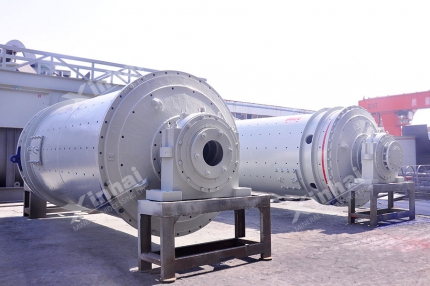Magnetite ore is one of the important sources of iron ore and is a highly magnetic mineral. Its embedded state is divided into coarse-grained, coarse- and fine-grained, fine-grained and fine-grained. When processing magnetite, one of the commonly used beneficiation processes is the fine screening and regrinding process. However, the drawback of this process is that all the iron concentrate products enter the grinding equipment, which easily causes over-grinding problems. At the same time, it also improves energy consumption. Especially for magnetite with coarse and fine grains. To solve this problem, the ore dressing process of stage grinding and magnetic separation can be used. This process can optimize the coarse-grained magnetite that has been monomer dissociated, effectively avoid over-grinding of coarse-grained magnetite, and improve economic benefits. The following will give you a detailed introduction to the process flow of magnetite ore stage grinding and magnetic separation.
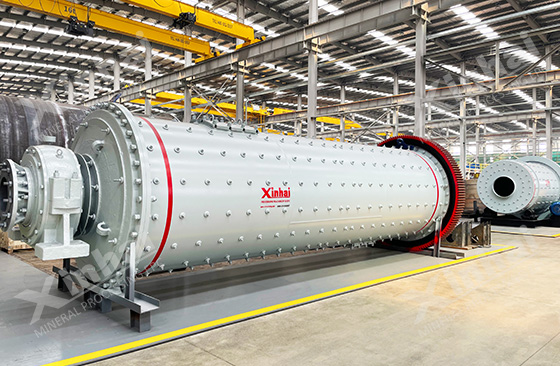
(ball mill)
Use the table of contents below to navigate through the guide:
01Magnetite ore first-stage grinding and magnetic separation process
The raw magnetite ore is sent to the crusher for crushing, and the screened ore enters a section of grinding equipment for grinding. The grinding equipment used is mainly ball mill or rod mill. The ground ore is graded through a hydrocyclone. The sand minerals produced by classification are sent to the first stage of grinding equipment for re-grinding to improve mineral utilization. The overflow minerals from the hydrocyclone enter a magnetic field screening machine for magnetic separation. The concentrate obtained by magnetic separation enters the second stage of sorting, and the tailings are sent to the tailings reservoir for storage.
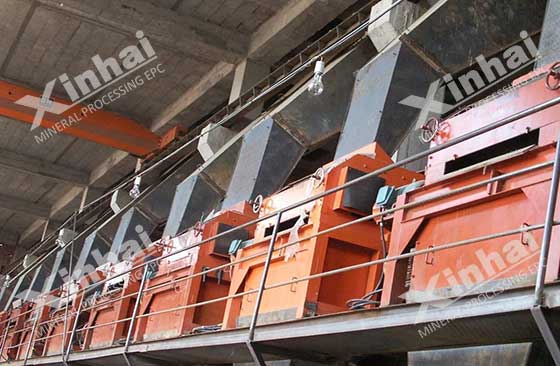
(Magnetic separator)
02Magnetite ore two-stage grinding and magnetic separation process
The concentrate obtained in the first stage of magnetic separation enters the second stage magnetic field magnetic separator for magnetic separation. The magnetically separated ore enters the second-stage grinding equipment for grinding. The concentrate obtained by the second-stage magnetic separation is screened and the product below the screen is used as the concentrate. The product above the screen enters the second-stage grinding product for regrinding. The products after the second-stage grinding need to be classified through a hydrocyclone, and the sand is sent to the second-stage grinding equipment, while the overflow product enters the third-stage magnetic separation process. Because the two-stage magnetic separation is not enough to collect the concentrate products in the minerals, in order to improve the concentrate recovery rate and mineral utilization rate, it is necessary to set up three-stage magnetic separation and four-stage magnetic separation processes. The three-stage magnetic separation concentrate enters the four-stage magnetic separation process for processing, and the obtained concentrate product is sent to the concentrate warehouse for processing, while the medium mineral products produced in the four-stage magnetic separation process are sent to the second-stage grinding equipment for processing.
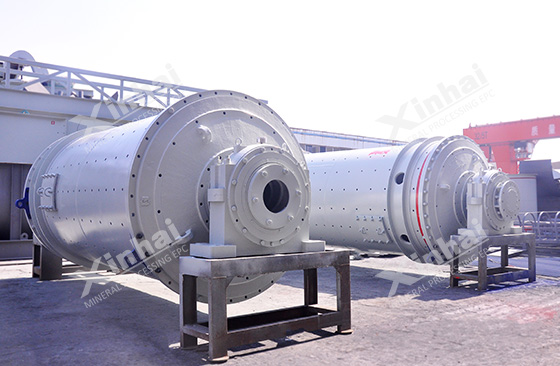
(rod mill)
03Magnetite ore grinding equipment
The equipment used in the first-stage grinding and second-stage grinding processes of magnetite is ball mill or rod mill.
When a ball mill is used, the materials are mainly impacted and crushed with the help of steel balls, which can also play a grinding role. In order to improve the working efficiency of the ball mill, the steel balls should be reasonably configured. The gaps between the large steel balls are filled with small steel balls, which can increase the packing density of the steel balls. The main function of the big ball is to crush mineral materials. The main function of the small balls is to grind, and at the same time transfer the impact energy of the big balls, and further squeeze the mineral materials, so that the minerals are better filled between the big balls.
When using a rod mill, a steel rod with appropriate grinding medium is installed in the cylinder. Under the action of centrifugal force and friction, the steel rod crushes the mineral materials, and the product is discharged from the body through the force of overflow and continuous feeding, so that Next step. When selecting grinding equipment, it should be based on the crushing conditions of the minerals, which can improve the grinding effect of the minerals.
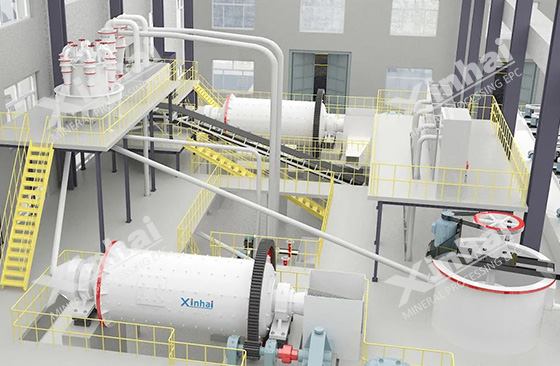
(Ore beneficiation process)
The above is the process flow of magnetite stage grinding and segmented magnetic separation and the required grinding equipment. When this process is adopted, the magnetic field can be used to increase the sedimentation velocity difference and size difference between magnetite and gangue minerals, so that the dissociated magnetite can be recovered as soon as possible, reducing the amount of grinding in the second stage of grinding, and reducing the Reduce the energy consumption of the mineral processing plant and improve economic benefits. This process has simple process flow, stable technical indicators and low operating costs. When designing the magnetite beneficiation process, the mineral processing plant can carry out customized designs based on the characteristics of the magnetite ore to improve the concentrate recovery rate and resource utilization rate, and further obtain better economic benefits.


 marketing@ytxinhai.com
marketing@ytxinhai.com  0086 13810327080
0086 13810327080 






































































































 CHAT
CHAT MESSAGE
MESSAGE



.jpg)
